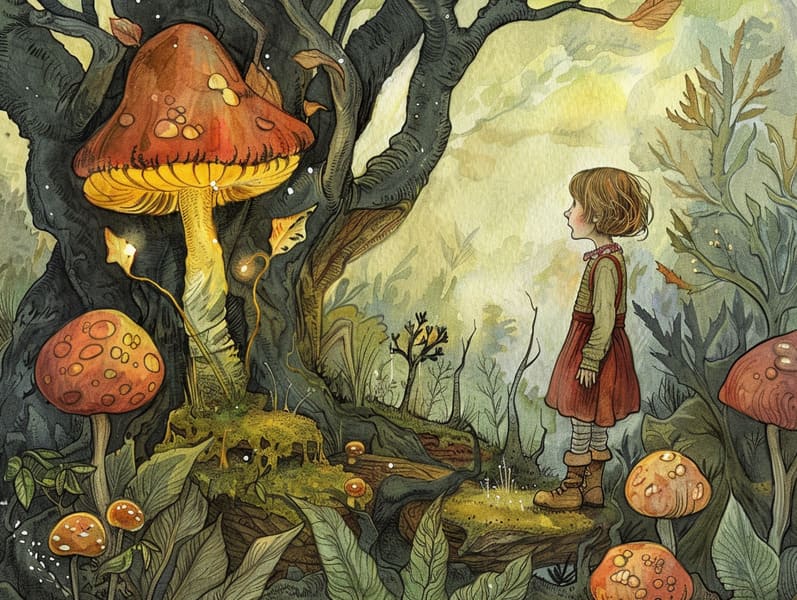The Start of Famous Fairy Tales and the Enduring Grace.
The Start of Famous Fairy Tales and the Enduring Grace.
Blog Article

Historical fairy tales have ancient roots. These narratives have been narrated from one generation to the next long before they were ever recorded. They came from a variety of cultures, including Middle Eastern traditions. They were initially narrated among older generations, often carrying themes and messages pertaining to the societal norms and beliefs of the time.
The renowned Brothers Grimm, Jacob and Wilhelm Grimm, were among the first to assemble many of these beloved stories. Their volume, "Grimm's Story Collection," included narratives like "Ashenputtel," "The Bread Crumb Trail," and "Schneewittchen," which have since become mainstays in the world of children's fairy tales. Similarly, Hans Andersen's fanciful tales, such as "The Story of the Little Mermaid," and "The Duckling that Could," have won hearts worldwide, ensuring their place in the pantheon of timeless fairy tales.
Though they are old, these stories remain as significant as ever, especially as children's bedtime stories. These magical stories are now available in many formats, including vividly illustrated books, charming animations, and digital fairy tales.
Their unwavering allure can be traced to several charming aspects:
Life Lessons: Traditional fairy tales often illustrate important moral lessons. Fairy tales like "The Boy Who Cried Wolf" teach the significance of honesty, while "The Story of the Tortoise and the Hare" point out the benefits of determination and humbleness. These tales offer young ones clear distinctions between good and bad, molding their moral compass in a soft yet significant way.
Kindness and Comprehension: Ancient fairy tales frequently showcase beings facing challenges and problems, urging audiences to identify with their struggles and support their triumphs. For instance, "Beauty and Her Beast" teaches us the virtue of appreciating inner worth to appreciate the real person of a individual, fostering insight and awareness.
Cultural Insights: Many classic fairy tales are interwoven with the cultural contexts from which they grew. Immersing in these stories can provide enlightening views into different ways of life, enhancing a sense of world awareness and knowledge.
Inventiveness and Imagination: The enchanted elements in old fairy tales—talking animals—provoke children’s dreaming abilities. These tales bring readers to mythical realms, engendering creative thinking and a sense of curiosity that continues a lifetime.
Timeless fairy tales are not only charming but also didactic. They serve as mesmerizing tools in developing various cognitive and emotional skills in young ones. When classic fairy tales are recited, they cultivate linguistic abilities by offering new language and detailed sentence structures. This practice also enhances listening abilities and mental focus, as young readers follow the story, excited to see what happens next.
Furthermore, contemplating the themes and characters of ancient fairy tales can develop reasoning skills and critical thinking. Young ones are led to detect patterns, anticipate outcomes, and get cause and effect. These analyses also boost little ones express their thoughts and feelings, nurturing their emotional intelligence.
In today’s high-tech era, the presence of digital storybooks has made these stories more acquirable than ever. Internet resources and software make available comprehensive collections of famous fairy tales that can be perused or listened through anytime, anywhere. Fairy tales voiced are particularly widespread, featuring an charming way for little ones to experience these fantastical tales. Voice books and read-to-me stories transport characters and settings to life, often paired with charming sound effects and soundtracks that augment the narrative adventure.
The timeless allure of ancient fairy tales lies in their ability to alter to modern days while retaining their core values. Contemporary versions of these tales often incorporate more diverse figures and modern settings, making them relatable to today’s audience. However, the underlying themes of gallantry, warmth, and lawfulness remain unchanged, continuing to influence audiences of all ages.
Fairy tales also offer a sense of solace and understanding. They put forth a orderly narrative with a recognizable beginning, middle, and end, often winding up with the wrap-up of conflicts and the triumph of justice over injustice. This foreseeability can be encouraging for kids, furnishing a sense of steadiness in an constantly changing world.
Classic fairy tales continue to delight and teach new generations, maintaining their majesty and impact in modern society. As kids' bedtime read more tales, they present to a perfect blend of delight and instruction, facilitating moral values, empathy, and creativity. The accessibility of online fairy tales and the likability of fairy tales spoken affirm that these ancient fairy tales remain reachable to new generations.
By keeping and telling these stories, we continue to appreciate the rich tapestry of inventiveness and cultural heritage. Whether you are seeing a beautifully illustrated book, discovering a internet collection, or listening through an spoken story, the radiance of famous fairy tales is always within reach. These fairy tales demonstrate of the steadfast effect of stories and its ability to bring us together across eras and regions.
Whether you are seeing a vividly illustrated book, seeing a web-based collection, or playing an audiobook, the mystique of traditional fairy tales is always within reach.
These fairy tales illustrate of the undying influence of fairy tales and its ability to bond us across eras and regions, making a tie that captivates and teaches alike.